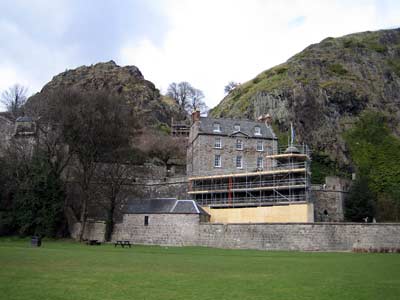 |
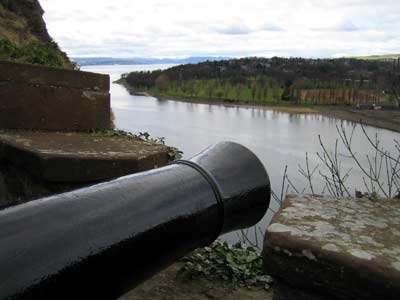 |
| The most impressive thing about Dumbarton Castle is the plug of basalt on which it is perched which, from at least the 5th to the 11th century AD was the centre of the independent British kingdom of Strathclyde. It may even have been used by Vikings as their headquarters in the 9th century. The fortress has offered shelter to illustrious figures such as David II (Robert the Bruce's son) and his young queen Joan, after the Scottish defeat at Halidon Hill in 1333 and later, the infant Mary, Queen of Scots for several months before she fled to France.
|
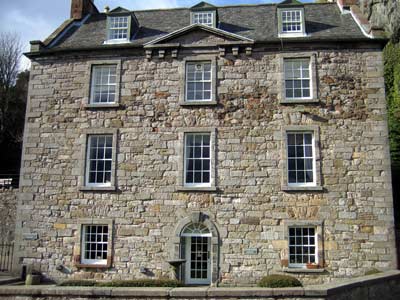 |
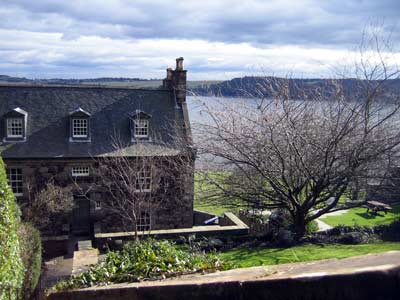 |
| The threats posed by the Jacobite supporters of the ousted Stewarts in the 17th century, and by the French during the Napoleonic Wars of the 18th century, prompted the Hanoverian Kings George II and George III to make several repairs and additions to Dumbarton, demolishing the medieval gatehouse to replace it with the "Governor's House" (above) and adding a new gun battery. The castle's guns were now controlling access by sea to the port of Glasgow, further up the Clyde.
|
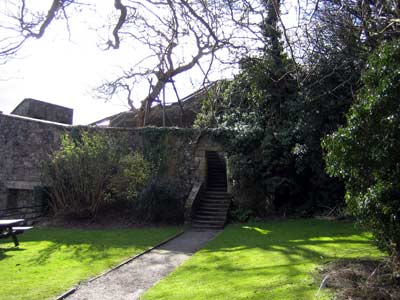 |
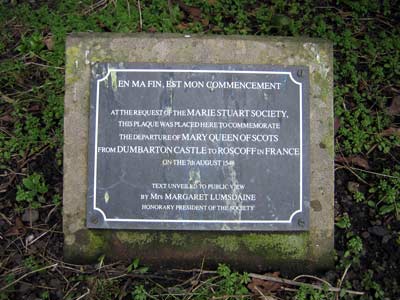 |
| The picture above shows the small garden at the back of the Governor's House, with stairs leading to the "Spur Battery". On this side, you can walk some distance along the western fortifications before coming to a dead-end. In the garden is a plaque laid at the request of the Marie Stuart Society, commemorating Marie Stuart's departure for Roscoff (France) on 7th August 1548. |





